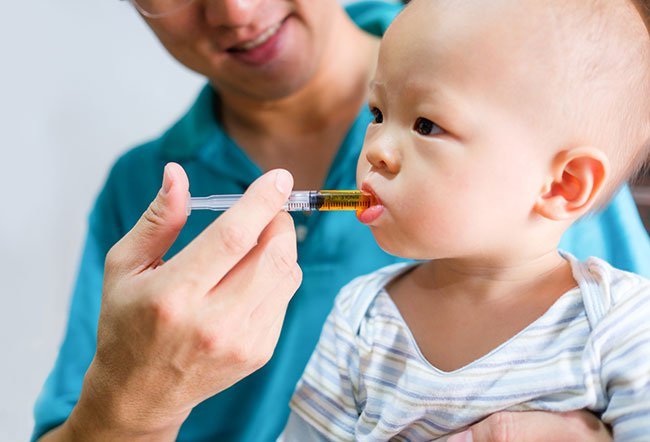What's the Difference Between Infant Tylenol and Children's Tylenol?

Tylenol, or acetaminophen, is an over-the-counter pain reliever that belongs to a class of drugs called analgesics (medications that relieve pain) and antipyretics (medications that reduce fever). It’s generally used for:
- Relieving mild to moderate pain like toothaches, headaches, muscle aches and sore throats.
- Managing fever and reactions to vaccine shots.
- Providing relief from inflammatory conditions.
While Tylenol is a safe drug when used correctly, incorrect dosages can make an infant or child sick.
How do Tylenol dosages differ for infants and children?
Old formulations
In the old formulations, infant Tylenol and children’s Tylenol had different concentrations:
- Infant Tylenol formulation was more concentrated, containing 80 milligrams of acetaminophen in 0.8 milliliters of the liquid. It had to be administered with a dropper.
- Children’s Tylenol was less concentrated with 160 milligrams of acetaminophen in 5 milliliters of the liquid.
Because of these different concentrations and, there used to be a risk of incorrect dosing. Since June 2011, however, both infant and children’s versions of the drug have been standardized to contain 160 milligrams of acetaminophen in 5 milliliters of the liquid.
Bottle design
The design of the bottles has also been changed with the addition of a safety flow restrictor. This reduces the quantity of the medication that may be accidentally consumed by a child.
| Version | Concentration | Measuring device | Bottle design |
|---|---|---|---|
| New infant liquid | 160 mg/5 mL | Syringe (mL) | Child safety cap flow restrictor |
| Old infant drops | 80 mg/0.8 mL | Dropper | Child safety cap |
| Version | Concentration | Measuring device | Bottle design |
|---|---|---|---|
| New children’s liquid | 160 mg/5 mL | Measuring cup (mL) | Child safety cap flow restrictor |
| Old children’s liquid | 160 mg/5 mL | Measuring cup (mL) | Child safety cap |
How to safely give Tylenol to your infant or child
For the safety of your infant or child, make sure to take the following safety measures:
- Keep the medication out of your child’s reach.
- Check the version of the formulation and concentration of the drug before use.
- Follow the instructions on the label or as prescribed by the doctor.
- Use the original measuring device that comes with the package.
- Although Tylenol is available without a physician’s prescription, ask your pediatrician’s advice before giving it to a child under the age of 2.
Are there any side effects of Tylenol?
While Tylenol is generally safe, some of the side effects that can occur include:
- Allergic reactions (such as hives)
- Breathing difficulties
- Swelling of the face, lips or tongue and difficulty speaking
Rarely, the drug can cause severe or life-threatening skin reactions, such as rashes, blistering and peeling. If you see signs of an allergic reaction, seek medical help immediately.
If your child has signs of liver problems, such as jaundice (yellowing of the skin and eyes), loss of appetite, dark urine, itching or clay-colored stool, talk to your pediatrician before giving them Tylenol.

